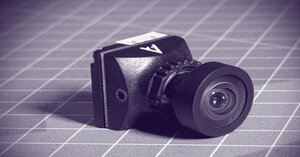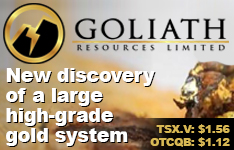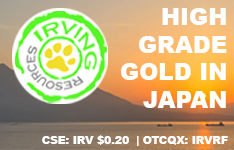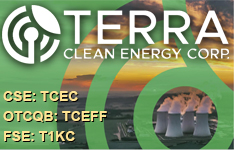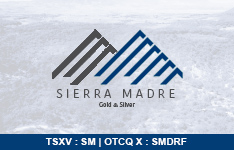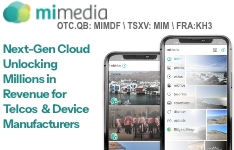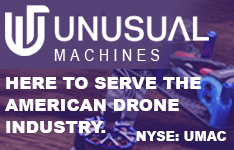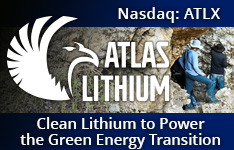You might assume that the first disposable diaper was created to enhance family mobility or for convenience, but that wasn`t the original intention, according to a report by Dr. Juliet Spurrier for GearLab Baby in 2018.
Disposable diapers were invented by Marion Donovan after World War II due to a shortage of cotton. However, it didn't take long for mothers to recognize the practical everyday benefits of Donovan's 1950 design: a rectangular plastic cover (initially made from shower curtains) over layers of tissue paper.
Since then, disposable diapers have undergone numerous changes, with over 1,000 patents filed in their name. Their popularity surged with the introduction of SAP, Super Absorbent Polymer, in the mid-80s. Today, it's estimated that 90% of U.S. parents use disposable diapers, Spurrier wrote.
"Disposable diapers are a great convenience in the modern world, but many parents question the safety of the materials in disposable diapers," she wrote. "Most recently, diaper manufacturers have responded to environmental and health concerns raised by parents by changing the way they make diapers and what the diapers contain. There is a trend toward greener and more biodegradable disposable diapers, which we view as a step in the right direction."
Birth Rates Growing in Asia, Africa
The global baby diapers market was valued at US$78.54 billion in 2024 and is anticipated to reach US$114.59 billion by 2030, with a compound annual growth rate (CAGR) of 6.6% from 2025 to 2030, according to Grand View Research.
A consistent increase in the global birth rate, particularly in emerging markets, is a significant factor propelling the baby diapers market, as more infants require diaper products, according to the research firm.
"As birth rates grow, particularly in regions such as Asia-Pacific, Africa, and Latin America, the demand for essential baby care products like diapers rises accordingly," Grand View said. "In these regions, where disposable income is also gradually increasing, parents are opting for convenient, hygienic, and high-quality diaper options, thus expanding the market. The growing population of infants directly correlates with higher diaper consumption, driving both production and sales across various diaper brands and categories."
According to a report by Tanya Benedicto Klich for Forbes on June 26, Pampers and Luvs (parent company Procter & Gamble) and Huggies (parent company Kimberly-Clark Corp.) together control roughly 75% of the U.S. diaper market.
The expansion of the baby diaper market is fueled by various factors that reflect shifts in consumer preferences, technological progress, and broader societal trends, according to a 2024 report from Research and Markets called "Baby Diapers – Global Strategic Business Report."
With increasing urbanization and a growing number of working parents, there is a heightened demand for convenient, high-performance diapers that align with active lifestyles. Additionally, greater awareness of infant health and hygiene is prompting parents to prioritize quality diapers that offer superior absorbency, skin protection, and comfort, driving the demand for advanced diaper products.
As eco-consciousness grows, there is also an increasing demand for sustainable diaper options, leading to a wider availability of eco-friendly disposable and cloth diapers.
Technological advancements have further propelled market growth, as manufacturers introduce features such as wetness indicators, hypoallergenic materials, and ergonomic designs to address specific needs like skin sensitivity and ease of use, the report said.
The rise of digital retailing has also made baby diapers more accessible than ever, with subscription-based services allowing parents to receive regular diaper deliveries directly to their homes, ensuring convenience and continuous availability, the firm said. Moreover, premium diapers offering added features such as pH-balancing and ultra-absorbent technology are gaining popularity as parents seek enhanced products that go beyond basic functions.
"Together, these factors highlight a dynamic diaper market, where innovation, consumer priorities, and environmental awareness intersect to shape the future of infant care products, meeting diverse needs in a rapidly evolving industry," the report's abstract noted.
Prices Rising, Demand Expanding
Prices are rising, as well. In the post-COVID era, Procter & Gamble and Kimberly-Clark are now facing widespread inflation, and unlike in 2018, they have significantly raised prices, far exceeding the underlying cost increases, reported Eric Gardner for More Perfect Union on June 14. This has been a shock to American families' budgets.
In July 2021, Bloomberg reported that the price of Pampers rose from about US$25 for 200 diapers to US$40 for 168 in just six months. On a per-unit basis, this represents a 90% increase, and prices have continued to climb. "It just doesn’t make sense that I have to spend so much for less," a father of three told Gardner.
According to a report by CNBC on August 8, diapers are the also quickest expanding segment in the household products industry — outpacing the growth of toothpaste, tissues, toilet paper, and other multibillion-dollar household essentials. The reason? Adult diapers. Although the baby diaper market is significantly larger, its sales growth has remained stagnant, whereas sales of adult incontinence products are on the rise, driven by the aging baby boomer population in the U.S.
It's no surprise that Procter & Gamble, the world's largest consumer products company, is entering this market, especially after facing challenges in boosting sales across its beauty to cleaning segments for several quarters, the CNBC report noted. Below are three public companies, including Procter & Gamble, that dominate the industry, and a private company looking to disrupt it.
Procter & Gamble Co.
Procter & Gamble Co. (PG:NYSE) makes two of the most recognized diaper brands in the world: Pampers and Luvs. The American multinational corporation, headquartered in Cincinnati, Ohio, and is organized into five divisions: beauty, grooming, health care, fabric and home care, and baby, feminine and family care (which includes diapers).
The company owns many brands that are often the global leaders in their respective categories, with several holding a market share exceeding 25%. The company derives 48% of its sales from the United States and 52% from international markets. It manufactures 90% of its products in the U.S. P&G is ranked 51st on the Fortune 500 and 60th on the Forbes Global 2000. The company was established in 1837 by William Procter and James Gamble.
The company is big enough that Jason Simpkins with Wealth Daily noted on July 29 that its earnings will give economists more insight as to how companies are coping with tariffs.
"Indeed, P&G is a bellwether if there ever was one. It’s amassed some of the world’s biggest brands — Tide, Pampers, Old Spice, Bounty, Cascade, Dawn, Crest, Gillette, and more — into a US$370 billion business," Simpkins said. "That footprint in consumer staples can act as a bit of a weathervane for spending sentiment. It's also vast enough that it can’t help but be compromised by tariffs."
P&G's Chief Executive, A.G. Lafley — who returned to the role just over a year ago with the goal of driving sales growth and revitalizing core businesses — announced the move into adult diapers during the fiscal fourth-quarter earnings call on August 1, according to the CNBC report.
P&G said it will begin distributing a range of products, including liners, pads, and disposable underwear, under the Always brand in North America. The company has already introduced this line in the U.K. and plans to start shipping to France later this month.
"With the trends in aging, the technology we have at this point and the strength of our Always brand, we think the time is right to get in," said Steven Bishop, president of global feminine and family care at P&G, in an interview with CNBC.
According to a report by Reuters and reported by the Nonwovens Industry website, the company recently also announced it has started producing its aloe-infused Bum Bum diapers for sale at Target stores in the U.S. in China after Pampers and Luvs started facing increasing competition from a rising number of imported diapers.
Earlier this year, Target announced the launch of Bum Bum diapers as part of a revamp of its baby care line but did not disclose manufacturing details for the brand. Recently, P&G stated that it introduced Bum Bum as part of a broader strategy to offer superior products, complementing its Pampers and Luvs brands.
P&G’s decision to import diapers from China highlights the appeal of imports due to the cost of U.S.-made goods, as the company seeks to boost sales in key categories like baby care.
In China, however, P&G is experiencing success with its Pampers brand, according to the Reuters report on the Nonwovens site. During a recent earnings call, executives informed analysts that Pampers is driving growth in the premium and super-premium segments by consistently enhancing and effectively communicating its superior offerings to provide ultimate comfort, protection, and luxurious softness. In fiscal 2025, the diaper brand achieved nearly 20% organic sales growth in China and increased its value share by more than two points.
However, the stock dropped 3.9% to US$151 in the week following its latest annual results. Overall, the results were solid, with revenues of US$84 billion and statutory earnings per share of US$6.51 aligning with analyst expectations, indicating that Procter & Gamble is performing as anticipated, reported Simply Wall Street on August 6. The site noted it compiled the latest post-earnings forecasts to understand what analysts are predicting for the company for the next year.
Considering the latest results, the consensus forecast from Procter & Gamble's 21 analysts anticipates revenues of US$87.1 billion in 2026, reflecting a satisfactory 3.3% increase compared to the past year. Earnings per share are expected to rise by 3.7% to US$6.95, the site's report said.
Prior to the earnings results, analysts had projected revenues of US$86.8 billion and earnings per share (EPS) of US$6.98 for 2026. The consensus among analysts suggests that there was nothing in the results to alter their view of the business, as there have been no significant changes to their estimates.
There were no adjustments to revenue or earnings forecasts or the average price target of US$171, indicating that the company met expectations in its recent results. However, this data also allows us to consider the range of estimates when evaluating analyst price targets. The most optimistic analyst has a price target of US$186 per share, while the most pessimistic values it at US$140. The narrow range of estimates suggests that analysts have a clear understanding of the company's valuation.
But one of the benefits of being a shareholder of the company is getting dividends: Its Board of Directors in July announced a quarterly dividend of US$1.0568 per share on both the Common Stock and the Series A and Series B ESOP Convertible Class A Preferred Stock.
"P&G has been paying a dividend for 135 consecutive years since its incorporation in 1890 and has increased its dividend for 69 consecutive years," the company noted in the release. "This reinforces our commitment to return cash to shareowners, many of whom rely on the steady, reliable income earned with their investment in P&G."
Pampers diapers include varieties such as Pure, Swaddlers, BabyDry, Aqua Pure, Easy Ups, and Splashers, are made with elemental chlorine-free fluff pulp and a super absorbent polymer at their core, P&G said. The topsheet and outer cover are made from safe plastic fibers like polypropylene, polyethylene, and polyester. The printed backsheets utilize inks that do not contain disperse dyes, while seams, adhesives, fasteners, and leg cuffs are made with tested, non-sensitizing materials.
Pampers said its diapers never contain elemental chlorine, latex, alcohol (ethanol/isopropyl), BPA, parabens, phenol, lead or mercury inks, PVC, organotin, disperse dyes, or certain preservatives such as MIT/MCI or triclosan.
Introduced in 1976, Luvs were sold as "deluxe" diapers in the late 1980s but in the 1990s became budget diapers. The Luvs brand also includes baby wipes.
According to Refinitiv, less than 1% of Procter & Gamble is owned by insiders and management and about 70% by institutions. The rest is retail.
Top shareholders include The Vanguard Group Inc. with 10.05%, BlackRock Institutional Trust Co. with 5.04%, State Street Global Advisors with 4.28%, Geode Capital Management with 2.54%, and Norges Bank Investment Management with 1.37%.
Its market cap is US$368.28 billion with 2.3 billion shares outstanding. It trades in a 52-week range of US$149.91 and US$180.43.
Kimberly-Clark Corp.
Kimberly-Clark Corp. (KMB:NYSE), which makes Huggies, recently released its latest quarterly results, which were disappointing for shareholders. The company fell short of analyst expectations, reporting revenues of US$4.2 billion and statutory earnings per share (EPS) of US$1.53, missing the mark by 6.8% and 8.7%, respectively, according to an August 4 report on Simply Wall Street.
Following the results, the consensus among Kimberly-Clark's 15 analysts is for revenues of US$18 billion in 2025, indicating a significant 8.7% decline compared to the previous year. Statutory earnings per share are expected to decrease by 13% to US$6.39 during the same period.
Prior to this earnings report, analysts had projected revenues of US$18.9 billion and EPS of US$6.30 for 2025. The consensus appears slightly more pessimistic, adjusting revenue forecasts downward after the latest results, although EPS estimates remain unchanged.
However, Simply Wall Street noted the consensus has maintained its price target of US$141, suggesting that analysts do not expect the weaker revenue outlook for next year to significantly impact Kimberly-Clark's market value.
But focusing solely on a single price target can be misleading, as the consensus target represents an average of analyst price targets. Consequently, some investors prefer to examine the range of estimates to identify any differing opinions on the company's valuation.
There is some variation in perceptions of Kimberly-Clark, with the most optimistic analyst valuing it at US$162 and the most pessimistic at US$118 per share, the report said. This indicates some diversity in estimates, but analysts do not seem to be entirely divided on the stock as a potential success or failure.
"These estimates are interesting, but it can be useful to paint some more broad strokes when seeing how forecasts compare, both to Kimberly-Clark's past performance and to peers in the same industry," Simply Wall Street noted. "We would highlight that revenue is expected to reverse, with a forecast 17% annualized decline to the end of 2025. That is a notable change from historical growth of 0.7% over the last five years. By contrast, our data suggests that other companies (with analyst coverage) in the same industry are forecast to see their revenue grow 3.1% annually for the foreseeable future."
An updated research note by Trefis on August 31 said the company has formed a strategic alliance with Suzano, the world's leading pulp producer, to establish a global joint venture centered on tissue and professional products.
Suzano will acquire a 51% majority interest for approximately US$1.734 billion in cash, while Kimberly-Clark will maintain a 49% stake. This agreement encompasses the majority of Kimberly-Clark's International Family Care and Professional (IFP) business. Kimberly-Clark's primary objective is to concentrate on its higher-growth, higher-margin sectors, such as its North America and International Personal Care divisions, and to realign its portfolio towards its core, global brands. The transaction, which carries an implied enterprise value of US$3.4 billion, is anticipated to be finalized by mid-2026.
Less than 1% of the company is owned by insiders and management, and about 82% is owned by institutions. The rest is retail.
Top shareholders include The Vanguard Group Inc. with 12.14%, State Street Global Advisors with 5.98%, BlackRock Institutional Trust Co. with 5.67%, Charles Schwab Investment Management with 1.56%, and Geode Capital Management LLC with 2.49%.
Its market cap is US$42.47 billion with 331.78 million shares outstanding. It trades in a 52-week range of US$124.10 and US$150.45.
Essity
Between September 1 and September 5, 2025, Essity Aktiebolag (publ) (ETTYF:OTCPK; ESSITY:B.ST) repurchased a total of 387,564 shares of its own Class B shares as part of a buyback program approved by the Board of Directors, the company announced in a September 8 release.
 Streetwise Ownership Overview*
Streetwise Ownership Overview*
Essity Aktiebolag (publ) (ETTYF:OTCPK)
The company's diaper brands include Libero and Drypers.
This share repurchase is a component of the SEK (Swedish Krona) 3 billion buyback initiative announced by Essity on April 23, 2025. The program is set to run from April 24, 2025.
The repurchase is funded through cash flow from ongoing operations after the ordinary dividend, with the intention of making share buybacks a regular aspect of Essity’s capital allocation strategy over time.
The buyback "aims to optimize capital allocation and is financed by cash flow from operations," a story by the TipRanks Sweden Auto-Generated Newsdesk reported. "The buyback, conducted on Nasdaq Stockholm, reflects Essity's strategy to enhance shareholder value and manage its capital structure effectively. The most recent analyst rating on ($SE:ESSITY.B) stock is a Buy with a SEK360 price target."
The company said earlier this year that it may shift more of its production to the U.S. from Mexico and Canada in response to tariffs by President Donald Trump. Essity derives approximately 14% of its sales from the U.S., with 10% of the products sold there being imported, primarily from Mexico and Canada, Chief Executive Officer Magnus Groth told Reuters.
According to a July 22 report on Futubull, Bram Softner, a virtual bot analyst used by TipRanks.com, maintains a Buy rating on the company with a target price of US$28.26. TipRanks data noted the analyst has a success rate of 41.4% and a total average return of -2.6% over the past year, the site said.
The company's website said Libero diapers' packaging now uses 60% recycled plastic and the overall product weight has been reduced by 19% since 2008, reducing the amount of waste and unnecessary use of resources.
Meanwhile, Drypers offers a wide range of diapers made to fit every stage of growth, including both tape and pants diapers. All Drypers products undergo a stringent quality control and testing process and must pass Vinda Malaysia’s rigorous Product Safety Acceptance tests, the company said.
Less than 1% of the company is held by insiders and management, Refinitiv said, with about 57% owned by institutions. The rest is in retail.
Top shareholders include AB Inudstrivarden with 6.93%, Norges Bank Investment Management with 4.66%, Swedbank Robur Fonder AB with 4.38%, BlackRock Institutional Trust Co. with 4.3%, and Vanguard Global Advisers with 4.03%.
Its market cap is SEK 174.25 billion with 627.64 million shares outstanding. It trades in a 52-week range of SEK 238.90 and SEK 326.
GreenCore Solutions Corp.
Private company GreenCore Solutions Corp. GreenCore Solutions Corp. said it is transforming the hygiene industry with its TreeFree Diaper® — an ultra-soft, pulp-free, and ultra-thin eco-friendly diaper, independently rated "CLASS B" by SGS for top-tier quality.
The diaper is the world's first large-scale, private label, tree-free, cellulose-free disposable baby diaper, according to a July report on the Nonwovens Industry website.
"By eliminating tree cellulosic fiber, it reduces CO₂ emissions by up to 85% and water footprint by up to 90% compared to conventional pulp-based diapers," the report said. "These environmental breakthroughs align with surging consumer demand for sustainable hygiene products — particularly among Europe's 224 million Gen Z and Millennial consumers, who together represent over 50% of the EU population."
The company said its products are designed to cater to the growing demand from consumers for "exceptional sustainability, eco transparency, and performance for private label retail partners."
In July, the company announced a strategic partnership with Emerson TEN OÜ, an Estonian leader in retail display and point-of-sale (POS) solutions, to enhance in-store visibility and sales performance for the TreeFree Diaper® line and GreenCore's FemCare UltraThin across key European markets.
Through this collaboration, Emerson will design and implement impactful POS displays tailored for GreenCore’s rapidly growing European retail network, which includes grocery, drugstore, and convenience channels. These new POS solutions will simplify the process for retailers to showcase and restock TreeFree Diaper® products, boosting shopper engagement and accelerating sales velocity.
"Partnering with Emerson TEN is a natural extension of our mission to bring TreeFree Diaper® to more European parents through retail partners who value sustainability and innovation," Keddy said. “Their expertise in dynamic in-store merchandising will empower our retail customers to capture the attention of eco-minded Gen Z and Millennial shoppers and support faster sell-through rates."
TreeFree Connexion®
Now the company has unveiled TreeFree Connexion® (TFC), the industry's first AI-driven execution engine designed to power the company's TreeFree Diaper® private label programs throughout Europe.
TFC facilitates a data-driven transition away from pulp brands, ensuring category leadership, compliance with European ESG audits, and future-proofing shelves in the €30 billion diaper market.
The company said that with TFC, retailers can now:
- Instantly align with iESG standards, including EUDR, CSRD, PPWR, and the EU Green Claims Directive.
- Conduct full swaps or controlled trials, replacing pulp/SAP SKUs with TreeFree Diaper® on shelves.
- Enhance margins in private label assortments without affecting category momentum.
- Rapidly scale with Partner Alliance for Traceable Hygiene (PATH+) OEM partners in Europe for manufacturing and logistics security.
"TreeFree Diaper® is now powered by TreeFree Connexion® — the new AI sales engine for the retail diaper aisle," Chief Executive Officer Matthew Keddy said. "It moves TreeFree Diaper® units with regulatory certainty, drives higher margins, and gives European retailers the agility to reset categories at the pace of consumer change."
He said it is a groundbreaking tech stack "built to shift the hygiene aisle — delivering stronger ESG compliance, stronger profitability, and stronger consumer loyalty, all centered on the success of private label TreeFree Diaper® in Europe."
The engine is built on over 1.5 million lines of proprietary code and trained with more than 2.5 million data points covering packaging, ESG, compliance, and retail velocity and transforms each TreeFree Diaper® SKU into a dynamic European ESG compliance file, margin model, and planogram-ready data node.
This achievement signifies the third wave of innovation in disposable diapers, with the first two being the transition from cloth to disposable diapers and the introduction of thinner SAP cores.
TreeFree Connexion® said it represents retail chief sustainability officers and buyers as an interconnected statistical pathway to securing shelf space. By integrating compliance risk, sales velocity, and consumer demand into a single AI framework, TFC provides quantitative insights that no competitor can rival. For instance, TFC analysis reveals how a 5% compliance gap under CSRD can result in an annual loss of €2–3 million in margin for a retailer with 500 stores — information that was previously hidden from the industry.
| Want to be the first to know about interesting Special Situations investment ideas? Sign up to receive the FREE Streetwise Reports' newsletter. | Subscribe |
Important Disclosures:
- Steve Sobek wrote this article for Streetwise Reports LLC and provides services to Streetwise Reports as an employee.
- This article does not constitute investment advice and is not a solicitation for any investment. Streetwise Reports does not render general or specific investment advice and the information on Streetwise Reports should not be considered a recommendation to buy or sell any security. Each reader is encouraged to consult with his or her personal financial adviser and perform their own comprehensive investment research. By opening this page, each reader accepts and agrees to Streetwise Reports' terms of use and full legal disclaimer. Streetwise Reports does not endorse or recommend the business, products, services or securities of any company.
For additional disclosures, please click here.



